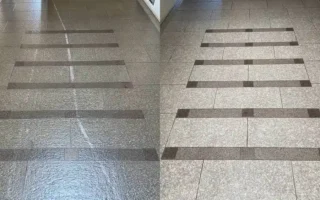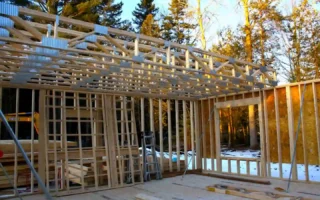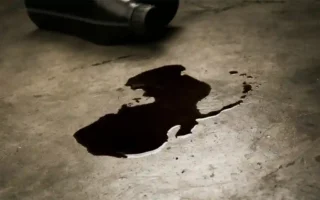Maintaining the integrity of your tile floor is crucial to ensuring its longevity and appearance. Understanding the structure of tile floors, being aware of potential water damage risks, and implementing proper waterproofing methods can prevent water from seeping under your tiles.
Regularly inspecting for signs of water damage and addressing any issues promptly will help preserve the beauty and functionality of your tile floor. Prevention is key when protecting your investment in a high-quality tile flooring installation.
By staying proactive and safeguarding against water infiltration, you can enjoy a beautiful and durable tile floor for years. Keep these tips in mind to maintain the integrity of your tile floor and ensure its lasting performance in your space.
The Importance of Proper Flooring Installation

Proper installation of tile flooring sets the foundation for its durability and functionality. When tiles are not installed correctly, it can lead to uneven surfaces, loose tiles, and gaps where water can seep through. Ensuring the subfloor is clean, level, and dry before laying down tiles is essential in preventing future problems.
Using high-quality adhesives and grout during installation helps create a strong bond between the tiles and the substrate. This bond not only enhances the overall stability of the floor but also acts as a barrier against moisture infiltration. Proper spacing between tiles allows for expansion and contraction without causing cracks or shifting.
Professional installers have the expertise to accurately assess your space, choose suitable materials, and execute precise installation techniques. By installing proper flooring from the start, you can enjoy a beautiful tile floor that stands the test of time with minimal maintenance required.
Understanding the Structure of Tile Floors
The subfloor is at the base of a tile floor, which provides a sturdy foundation for the tiles. The subfloor can be made of wood or concrete, depending on the construction of your home. On top of the subfloor lies a layer of thin-set mortar, which helps secure the tiles in place.
The tiles come in various materials, such as ceramic, porcelain, or natural stone. Grout fills the gaps between tiles, adding stability and preventing moisture from seeping through. Properly sealed grout also helps protect against water damage.
Knowing how tile floors are structured can help you appreciate their resilience and longevity.
What Happens When Water Gets Under a Tile Floor?

Water seeping under a tile floor can lead to issues that may not be immediately visible. Initially, you might notice tiles becoming loose or grout starting to deteriorate. As water infiltrates, it can cause further damage by weakening the tiles’ adhesive in place.
Over time, this moisture can create the perfect environment for mould and mildew growth, which poses health risks and compromises the structural integrity of your flooring. If left unchecked, water trapped beneath your tile floor can eventually spread to other areas of your home, causing even more extensive damage.
Excess moisture underneath the tiles can warp wooden subfloors or corrode metal ones. This could result in costly repairs and replacements down the line. It’s crucial to promptly address any signs of water intrusion to prevent these issues from escalating and safeguard the longevity of your tile flooring.
Prevention is Key: Waterproofing Methods for Tile Floors
Proper waterproofing is essential to protect your tile floors from water damage. One effective method is using a waterproof membrane during installation. This thin layer acts as a barrier, preventing water from seeping through the tiles and reaching the subfloor.
Sealing grout lines is another crucial step in waterproofing tile floors. Grout is porous and can absorb moisture, leading to mould and mildew growth if unprotected. By applying a quality grout sealer, you can enhance the longevity of your tile floor.
A sloped underlayment can help direct water towards the drainage system instead of pooling under the tiles in wet areas like bathrooms or kitchens. Using epoxy grout instead of traditional cement-based grout provides better resistance against water penetration.
Can Water Really Go Under a Tile Floor? Debunking Common Myths
Have you ever heard the myth that water can’t penetrate under a tile floor? Let’s debunk this common misconception. While tile floors are water-resistant, they are not completely waterproof.
Water can seep through grout lines, cracks, or gaps in the tiles and underlayment. This can lead to moisture buildup under the surface of your tile floor.
Factors like improper installation or lack of proper sealant can make water infiltrating beneath the tiles easier. Even small amounts of water over time can cause damage to your flooring and subfloor.
It’s essential to take preventive measures such as using waterproofing membranes or sealants during installation to protect your tile floor from potential water damage.
Signs of Water Damage in a Tile Floor and How to Fix It
Regarding tile floors, water damage can be a real headache. One of the signs to watch out for is loose or cracked tiles. If you notice any of these, water might lurk beneath the surface. Another red flag is grout that appears darker than usual or starts to crumble. This could indicate water seeping in and causing damage.
To fix these issues:
- Start by removing the affected tiles carefully. Clean
- Clean the area thoroughly and allow it to dry completely before proceeding with repairs.
- Replace any damaged grout and reseal it properly to prevent future water intrusion.
Proper waterproofing is key in ensuring your tile floor stays intact for years.
It’s always best to address water damage promptly before it escalates into a bigger problem. Regularly inspecting your tile floor for any signs of trouble can help you quickly catch issues and take necessary action.




